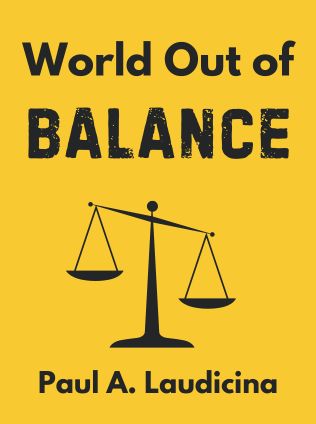
World Out of Balance
Navigating Global Risks To Seize Competitive Advantage
By Paul A. Laudicina
Published 12/2004
About the Author
Paul A. Laudicina is a distinguished figure in the field of global business policy and strategic planning. As the managing director of A.T. Kearney's Global Business Policy Council, he has a wealth of experience and insight into the complex interplay of global forces that shape the business landscape. With a career spanning decades, Laudicina has been at the forefront of advising top executives on how to navigate and thrive amidst the tumultuous shifts in global markets. His expertise is encapsulated in "World Out of Balance," a book that calls on corporate leaders to engage proactively with the external world to harness the opportunities it presents.
Main Idea
"World Out of Balance" is a clarion call for businesses to adopt a structured, dynamic approach to understanding and responding to changes in the external environment. Paul A. Laudicina argues that by developing processes to read and interpret the signs of change, companies can better anticipate and prepare for future developments that could significantly impact their operations. The book identifies five primary drivers of change—globalization, demographics, the new consumer, natural resources and the environment, and regulation and activism—and offers practical frameworks and scenarios to help business leaders navigate these complexities.
Table of Contents
- A Call to Action
- Globalization: Two Steps Forward, One Step Back
- Demographics: An Age of Extremes
- The New Consumer: Forging Bonds in a Fragmented World
- Natural Resources and the Environment: Stretching Limits
- Regulation and Activism: A New Breed of Challenges
- Visions of the Future
- Navigating Risks in Turbulent Times
A Call to Action
In the first chapter, Laudicina emphasizes the need for businesses to reinvigorate their capabilities for monitoring changes in the external environment. He recounts how companies like Royal Dutch/Shell once excelled in risk management and strategic planning, balancing opportunities with the vulnerabilities of global expansion. However, the complacency that followed the "benign globalization" of the 1990s led many companies to downsize their strategic planning functions, leaving them ill-prepared for today's complex world.
"Many believed that careful planning against external exigencies was largely unnecessary for success in global markets." - Paul A. Laudicina
Laudicina argues that businesses can no longer afford to ignore external risks. Instead, they must integrate insights about the external environment into their planning processes to identify new opportunities and avoid emerging threats. The key is understanding and acting upon the five primary drivers of change.
Globalization: Two Steps Forward, One Step Back
The second chapter explores the evolution of globalization, from the early days of multinational companies like Singer Manufacturing Co. to the highly interconnected global economy of today. Laudicina outlines three potential scenarios for the future of globalization:
Sign up for FREE and get access to 1,400+ books summaries.
You May Also Like
Rich Dad Poor Dad
What the Rich Teach Their Kids About Money - That the Poor and Middle Class Do Not!
By Robert T. KiyosakiFreakonomics
A Rogue Economist Explores the Hidden Side of Everything
By Steven D. Levitt and Stephen J. DubnerI Am Malala
The Story of the Girl Who Stood Up for Education and Was Shot by the Taliban
By Malala YousafzaiThe Lean Startup
How Today's Entrepreneurs Use Continuous Innovation to Create Radically Successful Businesses
By Eric RiesWho Moved My Cheese?
An Amazing Way to Deal with Change in Your Work and in Your Life
By Spencer Johnson, M.D.Factfulness
Ten Reasons We're Wrong About the World – and Why Things Are Better Than You Think
By Hans Rosling



















